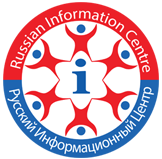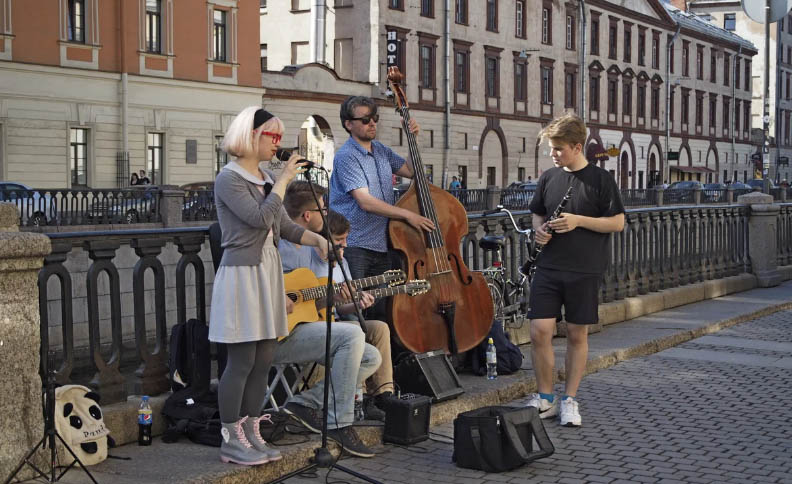St.Petersburg city – Venice of the North and Best Tourist Destination in Europe
St. Petersburg city is the Cultural Capital of Russia, one of the most beautiful cities in the world. The main Highlights – The Hermitage, Peter and Paul Fortress, Kazan Cathedral, the Church of the Savior on Spilled Blood, Nevsky Prospekt and the Summer Garden are sights that do not need special presentation. But Petersburg is also famous for the suburbs: Royal Family residences like Tsarskoye Selo (Pushkin), Pavlovsk, medieval city Vyborg and, of course, the brilliant Peterhof with its faboulous Park, Palace and fountains, which as beautiful as Versailles. Tourists from all over the world come here to see this extraordinary city and Highlights of White nights, Royal Palaces and Parks, fabulous architecture and drawbridges. Very often the city is called “Northern Venice”. By the number of waters flowing here, St. Petersburg is one of the first places in the world. Rivers and cannles divide the city into islands and small islands that are connected by bridges. Its a “must do” – to see the city from the water on one of the boat cruise.
St. Petersburg was awarded many times (latest in 2019) the World Travel Awards prize as the leading tourist destination in Europe. And it is not surprising – entire city center is the UNESCO World Heritage sites, here are more than 300 museums and palaces, and about 5000 Heritage building and monuments!
History of St.Petersburg
The official date of the city’s foundation is considered to be May 16, 1703 – on this day, construction work began on Zayachy Island. The city has changed its name several times in history. Until 1914, it was called Saint Petersburg, from August 1914 – Petrograd, from January 26, 1924-Leningrad, from September 7, 1991-again Saint Petersburg. The informal name is the Northern capital, the Northern Venice, the Northern Palmira, Piter, Cradle of three revolutions, etc.
From 1712 to March 1918 the city was the capital of Russia. Since 2008, the city became the second capital, when the Constitutional Court of the Russian Federation moved here.
Until the early 1720s, the main population of St. Petersburg was made up of soldiers, sailors, residents of Russian and Finnish villages, the so-called “working people”. According to the decree of 1704, up to 24 thousand people were recruited annually for city work throughout the country, who, after working for 2-3 months, returned to their villages. Then there were decrees ordering people to be sent to the city for “eternal settlement” – nobles, merchants, craftsmen from Moscow and other Russian cities. After the transfer of the capital from Moscow to Saint Petersburg, forced relocation was canceled.
If at first the city was considered as a place for hard labor, then with the move to St. Petersburg of the Tsar’s court and government bodies, there were many volunteers to live and work in the capital of Russia. In particular, the city has always had a lot of foreigners, especially Europeans. Peter the Great, a creator of major plan of St.Petersburg, wanted to build a European city, so he willingly invited specialists from Europe, attracting them to distant and cold Russia with high salaries, creative work and great opportunities for self-expression.
In the XVIII and XIX centuries, St. Petersburg remained a city of contrasts. Along with the Royal family and the wealthiest people in Russia, there were thousands of representatives of the so-called “taxable” classes who lived very poorly. If the nobles lived in huge palaces, just remember the Menshikov Palace on the University embankment, the “working” people settled in small wooden buildings in the suburbs. Their life was very hard. And not just because of the daily hard work. Wet and cold climate of St. Petersburg. Petersburg, the swamps, the dark, windy winters, the fear of flooding, the fear of the Tsar’s wrath and imminent death in case of failure to fulfill the state order oppressed.
The specifics of Saint Petersburg also include the fact that if food is not brought to the city, its residents will have nothing to eat. The land of these places is not suitable for high yields. The life of the city’s population still depends directly on the supply of everything necessary from other regions of Russia. During its history, the city has twice found itself in the ring of blockade – during the civil war and the great Patriotic war – and in both cases lost countless of its inhabitants. Read More >>
St.Petersburg in present time
Saint Petersburg is the most important industrial, cultural and scientific center of the Russian Federation after Moscow, a major railway hub, a significant port in the Baltic Sea, and the second largest city in Russia.
At the moment, the population of St. Petersburg in 5 992 392 people (2020). The city is one of the five largest cities in Europe, and it is also the northernmost city with a population of more than 1 million people.
Nowadays, according to opinion polls, Saint Petersburg is the most desirable city to move to. This is not surprising. Colleges, institutes, universities, museums, theaters, and concert venues attract young people from all over the country and abroad. Here many people find opportunities to develop their talents, study, work, and, just as importantly, opportunities for self-expression. Therefore, in no other city in Russia you will not find so many colorful and free personalities. It is enough to walk around the center in the evening, and you will see for yourself: bright colored hair, tattoos, piercings, informal style of clothing – this is how modern St. Petersburg youth can look like.
And how many clubs, bars, restaurants and all those places where you can relax and have a holiday with friends in this city!… But we need to talk about this separately…. read more >>
Geography
Saint Petersburg is located at the mouth of the Neva River at its confluence with the Gulf of Finland of the Baltic sea, and on the Islands of the Neva Delta. The width of the Neva river within the city limits is from 340 to 650 meters. The city is cut through by several dozen Neva branches, of which the most significant are Bolshaya and Malaya Neva, Bolshaya, Srednaya, Malaya nevki, Fontanka, and Moika. In total, there are more than 90 rivers and channels on the territory of St. Petersburg with a total length of more than 160 km. The branches of the Neva Delta form 42 Islands. The largest ones are Vasilievsky, Aptekarsky, Krestovsky, and Decembrist Island.
In the West, the city is washed by the waters of the Gulf of Finland. The city is located on the lowlands that make up most of the Neva Delta. Therefore, in the city with strong westerly winds, there are floods. The highest and therefore disastrous floods in the history of the city occurred in November 1824, when the water rose 421 cm above the ordinary, and in September 1924 – the rise of water by 380 cm, and waves – 4 meters. Flooding has been a constant problem in Saint Petersburg in the recent past. Water fluctuations are associated with a westerly wind that drives water into the mouth of the Neva river against its current, thereby causing a sharp rise in water. In 2011, the construction of a Complex of flood defences in Saint Petersburg was completed. Now the city is not afraid of floods.
Climate
The climate of Saint Petersburg is considered to be transitional from Continental to Maritime, with relatively mild winters, frequent thaws, and moderately warm, sometimes cool summers. The average temperature of the coldest month (February) is about -8°C, and the warmest (July) is +17.5°C. But there are also severe frosts in winter and heat in summer. The highest temperature recorded in the city during the entire period of meteorological observations reached +37.1°C, and the lowest–35.9 °C. The Neva river freezes for an average of 4 months a year.
During the calendar year, the length of the day in Saint Petersburg changes significantly.
This is due to its Northern position (59°57′ North latitude) – from June 11 to July 2 in the city there is a phenomenon of “White nights“, when the entire night consists of only twilight. White nights are a symbol of Saint Petersburg, a time of round-the-clock city life, various festivals, concerts, holidays, and folk festivals.
Author: Anna Skobeltsyna
Visit the grand locations that St Petersburg has to offer!
Contact us@ Russian InfoCenter to Book Classic Russia tour 5n/6d and more tour packages from India to Russia
Choose from flights ex Delhi, Mumbai & Calcutta
Fill the form below and we’ll get back to you right away!


























